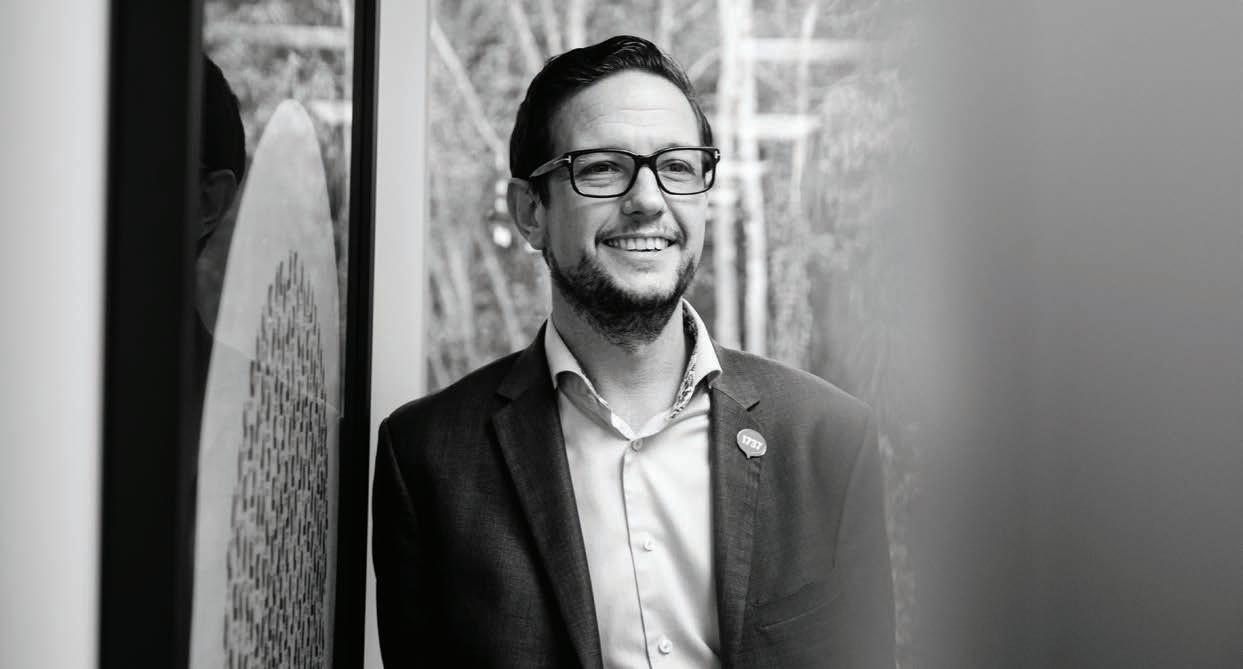
5 minute read
FINGER ON THE PULSE
Nine days into the job, new Chief People Officer at Te Whatu Ora Andrew Slater spoke to The Specialist about his aspirations for the job and how he hopes to turn the culture ship around.
Results of the latest Pulse survey conducted by Te Whatu Ora set the challenges for the newly appointed Chief People Officer, Andrew Slater.
The Pulse survey revealed only 19 per cent of respondents at Middlemore Hospital’s emergency department believed they had the resources to perform their job well. For staff across Auckland, that number was 33 per cent.
“I’ve always said in leadership there are only two things we can do when asked about something,” Slater said. “We can either give people the context and rationale for why something is the way it is, or change it.
“I’ve read through the high-level Pulse survey themes, and I am working with the team over the next couple of weeks to really get into that.”
Though new in the job, Slater says he was not surprised by some of the data uncovered in the Pulse survey.
“It’s based on what I see and hear from different spots in the health care system and from colleagues and friends,” he said.
“We’ve had 20,000 people take the time to write comments and provide feedback. Within that there are some actionable, tangible things that need to be done in some of our locations.
“Right now I am trying to make sure that those things are on the list, and someone can tell me when they’re done or not. The Pulse survey provides a benchmark for where we are at. The challenge for me and the People and Culture team is to turn that into actionable frameworks for our leaders to then be able to deliver change through.”
As Chief People Officer his responsibilities include human resources, payroll, health and safety, wellness, emergency management, organisational resilience, communications, and working with unions.
To perform this role, Slater says he will get into the front lines of the organisation to hear from people about ongoing issues, potential solutions and what needs to be done. He also leans on his network of friends and long-term colleagues working within the health sector, from whom he receives updates.
“I took this role and put my hand up because I want to be part of making sure we have the best public health system that we can possibly have,” he said.
“My ambition is to make that a reality. I see the challenges. I see the pressure on frontline staff, the post-COVID fatigue, and I’m also hearing things that people are hoping we will change in the system in the coming years with workforce and workforce supply.”
His biggest priority is addressing the culture of the workforce through a variety of means. The first step is establishing a healthy culture.
“A healthy culture is one that is free from bullying and intimidation,” he said. “Whether that is harassment from members of the public, patients, or colleagues. We need to make sure we’ve got some clear standards.
“We also need to make sure our people feel valued. That stretches from pay to leaders that make sure people feel valued. We also need people to feel like they have been listened to and heard.
“I’ve set a personal goal for myself that within the next quarter people will be able to see and feel something a little bit different. I’m not quite sure what that is yet.”
Asked about whether he would consider holding a health workforce census – a policy ASMS has been calling on for years – he stops short of confirming it would occur but concedes it would be valuable.
“I would love to understand more about our workforce,” he said. “What their hopes and aspirations are. What they identify as the key issues, and I do not quite know how to go about that. We do need more insight into our people than we have at the moment.”
Improving culture will assist New Zealand to be a competitive workplace destination in the global labour market. In turn, this may help fill the growing vacancies in medical roles. But, overall, a key challenge for Slater is to ensure New Zealand recruits and trains as many health care workers as it possibly can.
“Globally there is going to be an 18 million health care worker shortage by 2030,” he said. “The vacancies speak for themselves.
“It’s actually really important we retain our current people, make sure we train as many people from New Zealand as we can to fill these positions and make sure we have the best connections globally to get as much of the workforce we need to cover the remaining gaps.”
Slater imagines his godchildren when thinking about the task of overhauling the people and culture of New Zealand’s health care system.
“I really think about my godchildren who are thinking about going into medicine and what they hear at the moment about medicine as a career and an opportunity,” he said.
“I think we’ve got to pull the system together to be the best health system in the world, and part of that is we’ve got to make it a great place to work.
“I look forward to learning and understanding from your readers about what they think we can do to get to that place and encourage their own godchildren, children, or grandchildren to work in health.
“I don’t have the answers yet. What I do know is that in one year, two years and three years’ time I would like to see momentum taking our health care system a different way.”









